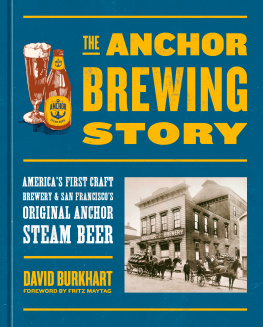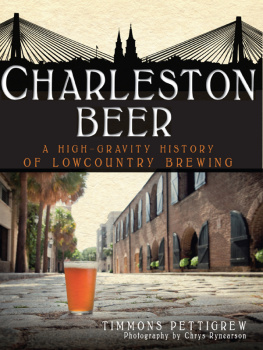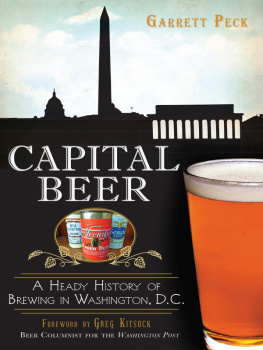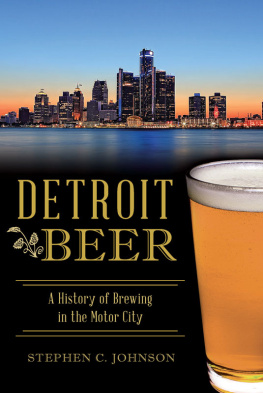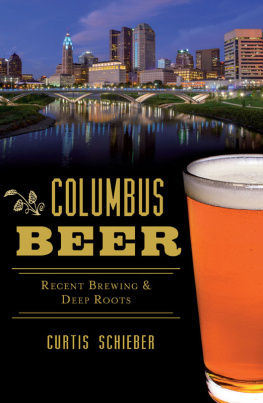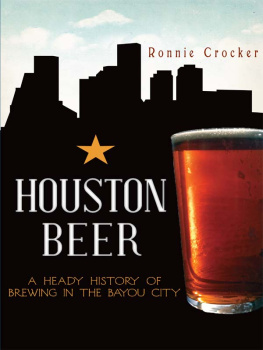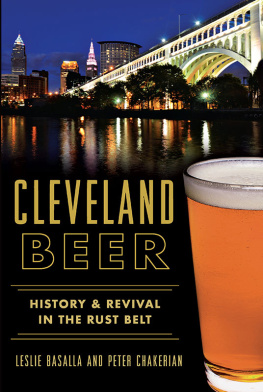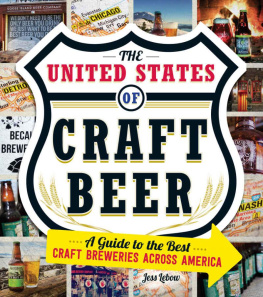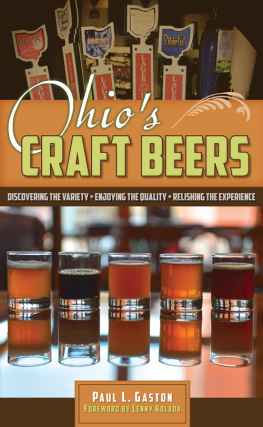

Published by American Palate
A Division of The History Press
Charleston, SC
www.historypress.net
Copyright 2017 by Curtis Schieber
All rights reserved
Front cover: Randall L. Schieber.
First published 2017
e-book edition 2017
ISBN 978.1.43966.362.2
Library of Congress Control Number: 2017948449
print edition ISBN 978.1.62619.910.1
Notice: The information in this book is true and complete to the best of our knowledge. It is offered without guarantee on the part of the author or The History Press. The author and The History Press disclaim all liability in connection with the use of this book.
All rights reserved. No part of this book may be reproduced or transmitted in any form whatsoever without prior written permission from the publisher except in the case of brief quotations embodied in critical articles and reviews.
For my mother, Marion Lillian Schieber, who read everything I wrote about anything until her passing in 2015 and my wife, Martine, and children, Evan and Flannery, who endured my distraction for nearly two-and-a-half years.
CONTENTS
ACKNOWLEDGEMENTS
While my gratitude goes out to all the interviewees whose memories shaped this story, I must admit the stories from Scott Francis, Angelo Signorino, Lenny Kolada, Vince Falcone, Allen Young, Victor Ecimovich III, Dick Stevens and Ben Pridgeon were personally meaningful. I was a friend to all of them as they created history in Columbus and was motivated to write this book, in part, to celebrate their accomplishments.
My journey began when, during a downturn in the available hours at my full-time job at Barnes & Noble and in search of freelance writing work, I contacted old pal Bill Eichenberger, now editor-in-chief at the Ohio History Connections quarterly magazine Timeline. He led me to The History Press, whose editors looked to add a chronicle of Columbus brewing to their series of regional interest books.
Research began in the dining room of Jay and Genie Hosters home. Jay was the first and one of the few descendants of the original line of German brewers I was able to find. Thanks to Jay for his stories, photos, documents and pictures of his memorabilia. When Jays family closed shop on the brewery, he said, they took nothing with them. He has had to acquire most of his fine collection of his own familys history from collectors, especially David Foster. Hopefully, this book will help get some of that history back into circulation.
When I first contacted Russ Arledge, curator of archives and facilities at the German Village Society, he was still cataloguing the August Wagner archives, donated by the estate of the storied brewers daughter Helen. Arledge was very generous with his time and the societys copyright, allowing me to publish the collections photos and documents in this book. Interestingly, in conversations with David Foster, I discovered not only that Helen had become Fosters friend but also that she had granted him rights to use the Gambrinus brand, the names of its signature brews and even the artwork from the originals when he began his own Gambrinus Brewery in 1993.
A year and a half into this project, when I was already six months past my first contracted deadline and was about to wrap up the research phase, I finally located David Foster, beer memorabilia collector, amateur historical sleuth and, for part of the 1990s, professional brewer. He had put his extensive collection, historical archives and brewing ambitions in storage and had become an antiques dealer.
He and his wife, Carla, still share a passion for beer history, which was reawakened when I arrived, unannounced, at their home in southeast Columbus in the spring of 2016. I was hoping I could just get a couple stories out of him and a recollection of his time resurrecting the Gambrinus brand twenty years before. I was ecstatic when he offered to open his collection, research and memory in order to further a project he had hoped to accomplish himself years agoto publish a book about the rich history of brewing in Columbus.
Similarly, my chance meeting with Columbus Brew Adventures Jim Ellisonhe spotted me taking a picture of King Gambrinus on Front Street one day and introduced himselfopened a new window on the citys brewing history. Jim connected me with Chris and Alex Hostettler, whose father and grandfather were essential brewmasters during nearly all of twentieth-century German brewing history. Alexs experience brewing for mainstream breweries, especially Anheuser-Busch, gave me a much-needed respect for the skill of the mega-companys brewers. Jim also connected me with Reid Wasserstrom, vice president of the realty division of the Wasserstrom companies, who took me on a memorable tour of the unused nooks and crannies of the old Hoster Brewery building.
While my initial investigation included, fittingly, the Ohio History Connection, I found the collections at the Columbus Metropolitan Library, and especially the help of librarians Julie Callahan, Nick Taggart and Nancy Kangas, essential in my education. Westerville Public Librarys Anti-Saloon League Museum and its collection of propaganda were downright eye-opening.
INTRODUCTION
Brewing in Columbus, Ohio, for decades has been dominated by the mammoth Anheuser-Busch plant at the north end of town. Its first brewery was founded in the United States by German immigrants in St. Louis in 1852 and became Anheuser-Busch at the end of the Civil War. AB first came to Columbus in 1966. But this book is about Columbuss own breweries established by locals, whether they were English and German immigrants or central Ohio born; pioneer brewers of the nineteenth century; or the wildly creative craft brewers of today. These breweries began in the community to which they were to add a rich tapestry of lore and impressive commerce.
Brewing in Columbus began just after the city, designed from its start in 1812 to be the state capital, was founded. The earliest brewers were of English descent. Beer making started humbly in a structure little more than a log cabin but, interestingly, right in the center of the area that would become the hub of Columbus brewing for another 160 years and grow to its turn-of-the-century heyday. Names such as Hoster, Born, Schlee and Wagner would forge national and international reputations from that neighborhood, making Columbus an industry hub. Called the Brewery District today, it was also the site for local brewings demise in 1974 and return in 1989.
While AB continues toas local craft brewers have been heard to jokespill more beer than the upstarts produce in a year, the town today has a brewing scene that has earned national notice again, with thirty-seven microbreweries and brewpubs currently operating and several more due to open this year. (It is interesting that this number was sixteen when I first sketched this introduction in the fall of 2014.)
Reading Tom Acitellis book The Audacity of Hops: The History of Americas Craft Beer Revolution, I was taken with the idea that the not widely known national history of the current brewing renaissance might make a good documentary. The story has all the elements for such a project, including colorful characters, a David-and-Goliath struggle at its center and a frontrow seat during the emergence of a wide-ranging and influential subculture, one that threatens to go mainstream as we speak.
Then I realized that I was reading a protohistory of craft brewing in Columbus, Ohio, and how its evolution mirrored the national emergence, first as a cult-sized interest and later as a cornerstone of current youth culture and a very real economic challenge to the gigantic beer industry. Acitellis book begins with the applianceand, more important, gourmet cheeseheir Fritz Maytag loving and then buying a decaying old brewery/restaurant in San Francisco called the Old Spaghetti Factory, which brewed and served a beer called Anchor Steam. As the book backtracks a bit to recount the stories of a couple of servicemen stationed abroad and an Englishman, all three of whom wished to drink European-style beers in America, we find the roots of home brewing, formal brewing education and the birth of modern brewing experimentation. Maytag employed an unknown hop grown in the Yakima Valley of Washington State for his crucial Liberty Ale in 1974. It was later named Cascade, and its floral resins came to be the signature flavor note distinguishing American-style craft beers to this day.
Next page


